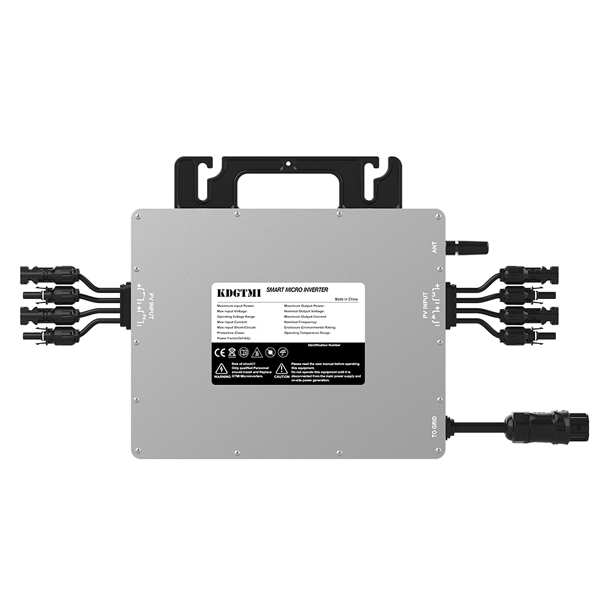The function of the photovoltaic power plant inverter is to convert the direct current in the solar photovoltaic power generation system into alternating current with the suitable frequency and amplitude of the power grid through the inverter, and then to the power supply network or the load.

Type of grid-connected inverter for photovoltaic power station
1, central inverter
The central inverter is suitable for large photovoltaic power plants, which can connect multiple solar panels in series and convert their rectified direct current into alternating current.
2, string inverter
String inverters are suitable for small photovoltaic systems, which can divide the entire photovoltaic power station into multiple strings, respectively connected to the inverter of each string for conversion.
3, micro inverter
Micro-inverters are suitable for individual solar panels and can convert their direct current into alternating current.
Pv power station grid-connected inverter parameters
1, rated power of the inverter
The rated power of the inverter refers to the maximum AC power that the inverter can output. When designing the photovoltaic power station, the rated power of the inverter needs to be selected according to the total power of the photovoltaic module to ensure the efficiency of the entire system.
2, the maximum DC input voltage that the inverter can accept
Maximum input voltage The maximum DC input voltage that the inverter can accept. Under normal circumstances, the DC voltage generated by the photovoltaic module will change with the intensity of sunlight, and the inverter needs to be able to adapt to this change to ensure the stable operation of the system.
3, the maximum DC input current that the inverter can withstand
Maximum input current The maximum DC input current that the inverter can withstand, the current output of the photovoltaic module needs to be considered when designing the photovoltaic power station, and the appropriate inverter is selected to match.

The role of grid-connected inverter in photovoltaic power station
1. Electric energy conversion
The electricity generated by photovoltaic panels is direct current, and the mains power grid uses alternating current, and the inverter can convert direct current into alternating current, so that the electricity generated by photovoltaic power stations can be directly sent into the mains power grid to achieve the effective use of electric energy.
2. Power regulation
The inverter can automatically adjust the output power according to the needs of the mains power grid, ensure that the power quality meets the standards of the mains power grid, and improve the stability and reliability of photovoltaic power generation.
3. Power grid protection
When the inverter is connected to the grid, it can monitor the state of the power grid and disconnect the surge protection when the power grid fails to avoid the impact of the photovoltaic power station on the power grid.
4. Data collection
The built-in data acquisition function of the inverter can monitor and record the power generation, voltage, current and other parameters of the photovoltaic power station in real time, providing data support for the management and operation of the photovoltaic power station.
5. Running monitoring
The inverter can remotely monitor the operating status of the photovoltaic power station, discover and deal with faults in time, and improve the operating efficiency and stability of the photovoltaic power station.
In general, photovoltaic power plant grid-connected inverters can not only effectively convert photovoltaic power generation into electricity available in the mains grid, but also protect the safe and stable operation of the grid and equipment, providing important support for the development of the photovoltaic power generation industry.



